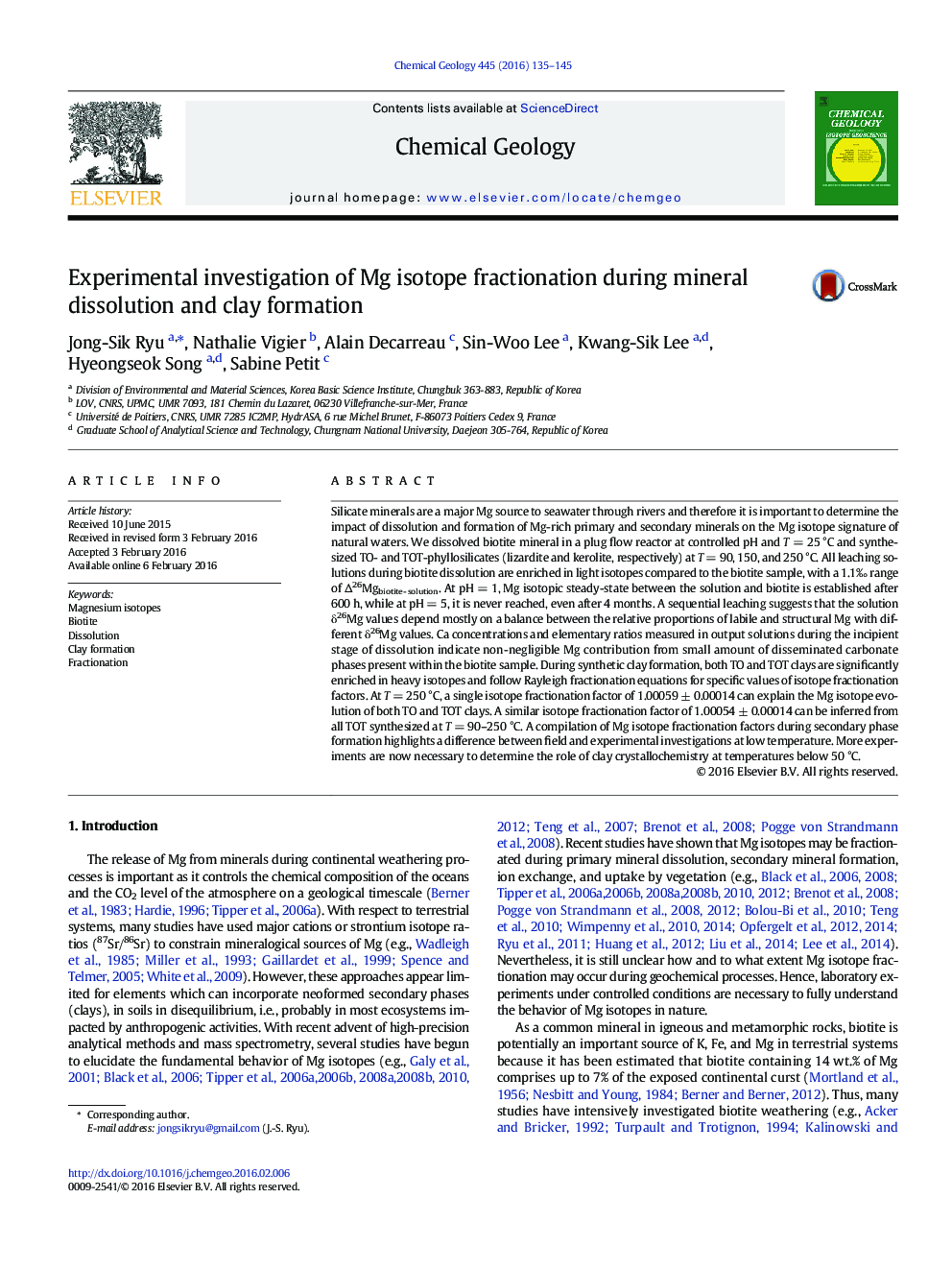| کد مقاله | کد نشریه | سال انتشار | مقاله انگلیسی | نسخه تمام متن |
|---|---|---|---|---|
| 4698156 | 1637529 | 2016 | 11 صفحه PDF | دانلود رایگان |

• We performed experimental biotite dissolution and syntheses of TO and TOT clays.
• Dissolved δ26Mg during biotite dissolution reflects a conservative mixing between “labile” Mg and “structural” Mg but never reaches the biotite value, even after 4 months.
• We estimated a Mg isotope fractionation factor of 1.00054 ± 0.00014 during TOT clay formation at T = 90–250 °C and highligted no significant impact of T and clay type for T > 90 °C.
Silicate minerals are a major Mg source to seawater through rivers and therefore it is important to determine the impact of dissolution and formation of Mg-rich primary and secondary minerals on the Mg isotope signature of natural waters. We dissolved biotite mineral in a plug flow reactor at controlled pH and T = 25 °C and synthesized TO- and TOT-phyllosilicates (lizardite and kerolite, respectively) at T = 90, 150, and 250 °C. All leaching solutions during biotite dissolution are enriched in light isotopes compared to the biotite sample, with a 1.1‰ range of Δ26Mgbiotite - solution. At pH = 1, Mg isotopic steady-state between the solution and biotite is established after 600 h, while at pH = 5, it is never reached, even after 4 months. A sequential leaching suggests that the solution δ26Mg values depend mostly on a balance between the relative proportions of labile and structural Mg with different δ26Mg values. Ca concentrations and elementary ratios measured in output solutions during the incipient stage of dissolution indicate non-negligible Mg contribution from small amount of disseminated carbonate phases present within the biotite sample. During synthetic clay formation, both TO and TOT clays are significantly enriched in heavy isotopes and follow Rayleigh fractionation equations for specific values of isotope fractionation factors. At T = 250 °C, a single isotope fractionation factor of 1.00059 ± 0.00014 can explain the Mg isotope evolution of both TO and TOT clays. A similar isotope fractionation factor of 1.00054 ± 0.00014 can be inferred from all TOT synthesized at T = 90–250 °C. A compilation of Mg isotope fractionation factors during secondary phase formation highlights a difference between field and experimental investigations at low temperature. More experiments are now necessary to determine the role of clay crystallochemistry at temperatures below 50 °C.
Journal: Chemical Geology - Volume 445, 16 December 2016, Pages 135–145